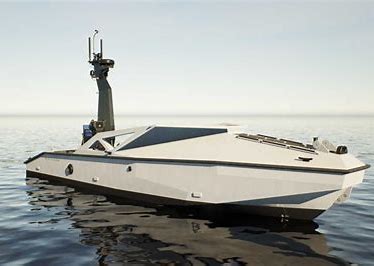
The U.S. Navy is charting a new course in maritime operations with the formal establishment of its second unmanned surface drone unit, known as the “Hell Hounds” of Unmanned Surface Vessel Squadron 3.

This innovative squadron is tasked with integrating hundreds of autonomous Global Autonomous Reconnaissance Craft (GARC) into the surface fleet, changing the face of naval warfare.

At the helm of the initiative, Navy Capt. Shea Thompson emphasizes the groundbreaking nature of this venture, “We collectively are writing the instruction manuals, qualification standards, concepts of operations and developing the tactics, techniques, and procedures for employment of these platforms as we strive to accelerate delivery of USV capability to the fleet.”

This move represents a significant leap in naval capabilities as it promises to bolster U.S. naval power with low-cost, high-endurance, autonomous vessels equipped with state-of-the-art sensors and weapons systems.

These USVs are designed to carry out missions without direct human control, expanding the fleet’s operational reach and effectiveness.

The squadron’s GARCs, 16-foot aluminum prototype USVs, have already been put through their initial paces alongside fleet units, demonstrating their potential in complex maneuvers and strategy.

Vice Adm. Brendan McClane acknowledges the progress, stating, “It was a leap forward in capability validation and development.”

Moreover, the squadron will pioneer development across the board, from command and control to intelligence and reconnaissance, playing a vital role in the Navy’s ambitious plans for distributed maritime operations.

Capt. Derek Rader, the squadron commander, points out the importance of human operators and technicians, “are the center of gravity of everything that we do.”

In line with the future-focused approach, the Navy has also rolled out the robotics systems technician rating, preparing sailors for the multifaceted demands of operating and maintaining these cutting-edge systems.

USVRON-3, starting with a team of 24 and projected to grow to around 400, will be at the forefront, working alongside Naval Special Warfare Group 1 and Marine Corps organizations to refine USV roles in expeditionary contexts.

The integration of these small USVs into fleet operations will not only enhance warfighting capabilities but do so at a reduced risk and cost. As the Navy continues to innovate, parallels are drawn with Ukraine’s use of unmanned systems, highlighting the strategic value of such assets in modern warfare.

The squadron, working in tandem with civilian contractors, is encouraged to push the limits of these technologies, as Electronics Technician 2nd Class Kaleb Cox explains, “They want us to break it, they want us to find flaws.”

This embrace of innovation in the service of national defense echoes the accolades of the 20th Attack Squadron, the Air Force’s “Hellhounds,” who received the title of 2019 Remotely Piloted Aircraft Squadron of the Year. Their lethal efficiency and dedication to excellence exemplify the fighting spirit that the Hell Hounds of the Navy will carry forward in this new unmanned era.

As the Navy surges ahead with the GARC, other services are sure to follow suit. The “Hell Hounds” are not just crafting missions; they are crafting the future of naval warfare, forging a path towards a new paradigm where unmanned vessels stand shoulder to shoulder with the traditional pillars of naval might.
Relevant articles:
– Navy ‘Hell Hounds’ Squadron Crafting Missions for Small, Lethal Drone Fleet, USNI News
– 20th ATKS ‘Hellhounds’ earn RPA Squadron of the Year, Whiteman AFB (.mil)
